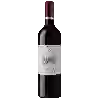
Cave du MarmandaisComte de Angier
This wine generally goes well with poultry, beef or mature and hard cheese.
Food and wine pairings with Comte de Angier
Pairings that work perfectly with Comte de Angier
Original food and wine pairings with Comte de Angier
The Comte de Angier of Cave du Marmandais matches generally quite well with dishes of beef, spicy food or mature and hard cheese such as recipes of beef with onions chinese style, shrimp marinade or lasagna of the sea with zucchini.
Details and technical informations about Cave du Marmandais's Comte de Angier.
Discover the grape variety: Malbec
Malbec, a high-yielding red grape variety, produces tannic and colourful wines. It is produced in different wine-growing regions and changes its name according to the grape variety. Called Auxerrois in Cahors, Malbec in Bordeaux, it is also known as Côt. 6,000 hectares of the Malbec grape are grown in France (in decline since the 1950s). Malbec is also very successful in Argentina. The country has become the world's leading producer of Malbec and offers wines with great potential.
Informations about the Cave du Marmandais
The Cave du Marmandais is one of of the world's great estates. It offers 172 wines for sale in the of Côtes du Marmandais to come and discover on site or to buy online.
The wine region of Côtes du Marmandais
Côtes du Marmandais is a satellite district of the Bordeaux wine region in Southwest France. It owes its name to the town of Marmande at its centre, which Lies on the North bank of the Garonne. The appellation AOC Côtes du Marmandais covers red, white and rosé wines produced from grapes grown in defined areas of the parishes around Marmande. The Garonne River divides the Marmande district into two Parts, the north and the south, which are eastern extensions of the Entre-deux-Mers and Graves regions respectively.
The wine region of South West
The South-West is a large territorial area of France, comprising the administrative regions of Aquitaine, Limousin and Midi-Pyrénées. However, as far as the French wine area is concerned, the South-West region is a little less clear-cut, as it excludes Bordeaux - a wine region so productive that it is de facto an area in its own right. The wines of the South West have a Long and eventful history. The local rivers play a key role, as they were the main trade routes to bring wines from traditional regions such as Cahors, Bergerac, Buzet and Gaillac to their markets.
The word of the wine: Persistence
Persistence in the mouth of a wine measured in caudalies.











